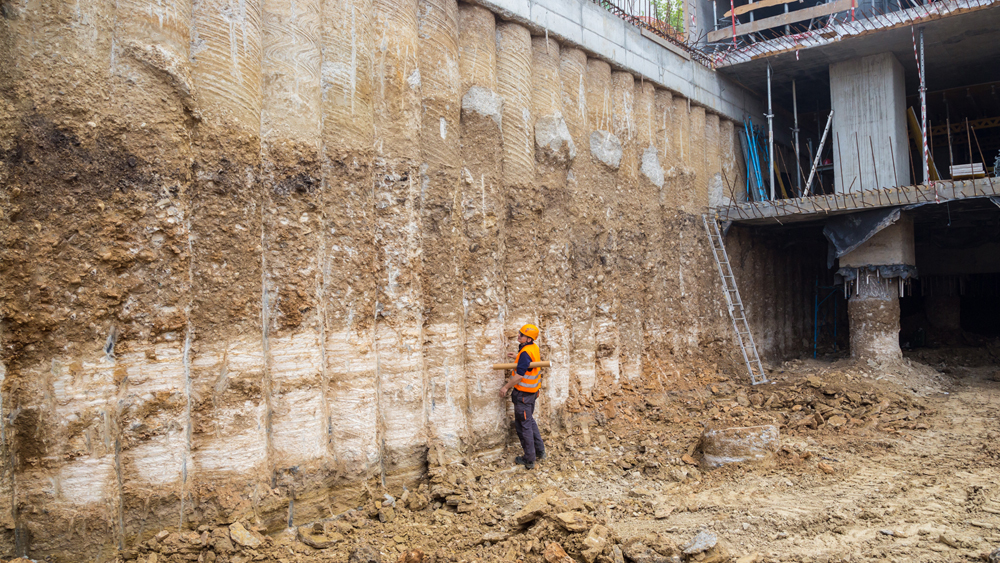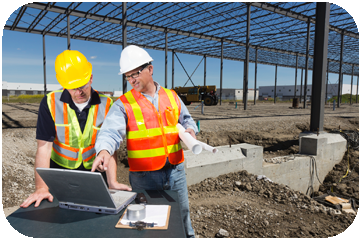Project Geotechnical Engineer Proficiency for Large-Scale Dope
Project Geotechnical Engineer Proficiency for Large-Scale Dope
Blog Article
A Comprehensive Assessment of the Providers Given by Consulting Engineers in the Field of Geotechnical Engineering: From Site Examination to Job Implementation
Consulting designers in geotechnical engineering play a pivotal function in the effective implementation of building and construction projects, beginning with thorough site investigations that disclose essential subsurface conditions. Their knowledge prolongs to dirt residential property assessments, environmental influence evaluations, and the mindful tracking of project implementation, making certain placement with safety and sustainability requirements.
Relevance of Geotechnical Engineering
Geotechnical engineering is a vital technique that underpins the safety and security and sustainability of civil facilities tasks. By understanding the mechanical actions of soil and rock products, geotechnical engineers examine the viability of sites for different constructions, including structures, bridges, and dams. This basic evaluation makes sure that structures can stand up to environmental aspects and loads without experiencing failure.
The significance of geotechnical engineering expands past mere structural safety; it also incorporates ecological stewardship. Correct geotechnical evaluations add to reducing the environmental influence of building. Via mindful evaluation of soil properties and groundwater problems, engineers can design structures and retaining structures that reduce dangers such as disintegration and landslides, advertising lasting security.
Moreover, geotechnical engineering plays an essential role in project price administration. geotechnical works. By recognizing prospective concerns early in the style phase, engineers can advise ideal remedies, thus avoiding costly hold-ups and redesigns throughout construction. This aggressive strategy not just boosts job efficiency yet additionally considerably lowers risks related to unpredicted site conditions
Website Examination Strategies
Efficient site investigation strategies are vital for gathering exact data about subsurface problems before construction. These methods promote the understanding of the geological and hydrological environment, which is important for making sure the stability and safety and security of proposed frameworks.
Typical methods utilized in site examinations consist of borehole boring, which allows designers to extract soil examples at various midsts, giving understandings right into stratification and product types. On top of that, geophysical surveys, such as seismic refraction and electric resistivity, offer non-invasive means to assess subsurface features over bigger locations. These techniques can help determine anomalies without extensive excavation.
Test pits are an additional important technique, offering direct observation of dirt layers and allowing in-situ screening. geotechnical works. This strategy is especially helpful for superficial excavations and can help examine groundwater levels. Moreover, cone penetration examinations (CPT) are increasingly used, as they supply constant profiles of soil resistance, which aids in determining soil stamina and layering.
Each of these techniques plays a vital duty in establishing an extensive understanding of site conditions, enabling consulting designers to make educated choices and suggestions throughout the project lifecycle. Exact information collection during the site investigation phase is essential to mitigating risks and ensuring successful job implementation.
Dirt Home Assessment

The analysis procedure usually entails a mix of lab examinations and area examinations. Trick buildings such as shear stamina, compressibility, permeability, and moisture content are evaluated to figure out the soil's suitability this content for building and construction functions. Typical tests, including the Atterberg limitations, Proctor compaction, and triaxial shear tests, are frequently utilized to collect data on dirt habits.
Along with these tests, in-situ approaches such as the Requirement Penetration Test (SPT) and Cone Penetration Examination (CPT) offer useful understandings into dirt stratigraphy and density. The outcomes of these analyses educate engineers about possible obstacles, such as dirt liquefaction or settlement, allowing them to design ideal reduction methods.
Environmental Influence Examination
Environmental impact examination plays a critical role in the planning and implementation of design jobs, especially in geotechnical design. This procedure involves analyzing the possible ecological effects of suggested projects on dirt, water, air high quality, and surrounding communities. Consulting engineers make use of numerous techniques, consisting of website analyses, modeling, and area research studies, to identify and measure these impacts.
The analysis usually begins with the recognition of baseline environmental problems, which works as a reference for anticipating prospective adjustments. Engineers analyze aspects such as disintegration, groundwater contamination, and habitat disturbance, making certain that all appropriate environmental guidelines and standards are followed throughout the More about the author job lifecycle. Stakeholder engagement is additionally an important component of the assessment process, as it promotes interaction in between task programmers, regional communities, and governing bodies.
Moreover, reduction approaches are created to attend to identified effects, permitting designers to recommend options or alterations to project layouts that improve sustainability. This proactive method not only reduces damaging effects on the setting yet likewise advertises public trust fund and compliance with ecological regulation. Inevitably, efficient ecological effect examination reinforces the total stability and stability of geotechnical engineering projects, sustaining accountable advancement techniques.
Task Implementation and Monitoring

Tracking is a crucial part of task implementation. Designers make use of various strategies, such as instrumentation and area examinations, to examine soil actions and structural feedbacks in real-time. This continual tracking allows the identification of any deviations from expected performance, allowing for prompt treatments to reduce dangers.
Additionally, getting in touch with designers maintain open interaction with specialists and stakeholders throughout the procedure. Routine website assessments and report card guarantee that all celebrations are notified concerning task standing and any type of arising issues. By promoting collaboration and openness, getting in touch with designers help with a more efficient implementation procedure, consequently boosting project outcomes.
Ultimately, reliable task execution and surveillance not only maintain safety and high quality criteria but also contribute to the total success of geotechnical projects, guaranteeing they satisfy their designated purposes sustainably and responsibly.

Final Thought
To conclude, the role of seeking advice from engineers in geotechnical design encompasses a crucial series of services that make sure job success. From thorough website investigations to thorough dirt property evaluations and environmental influence examinations, these professionals prepared for safe and sustainable construction techniques. Continual surveillance during task execution additionally assures architectural stability and stakeholder communication. Inevitably, the multifaceted payments of getting in touch with designers are essential in resolving the intricacies of geotechnical challenges in modern design projects. browse around here
Report this page